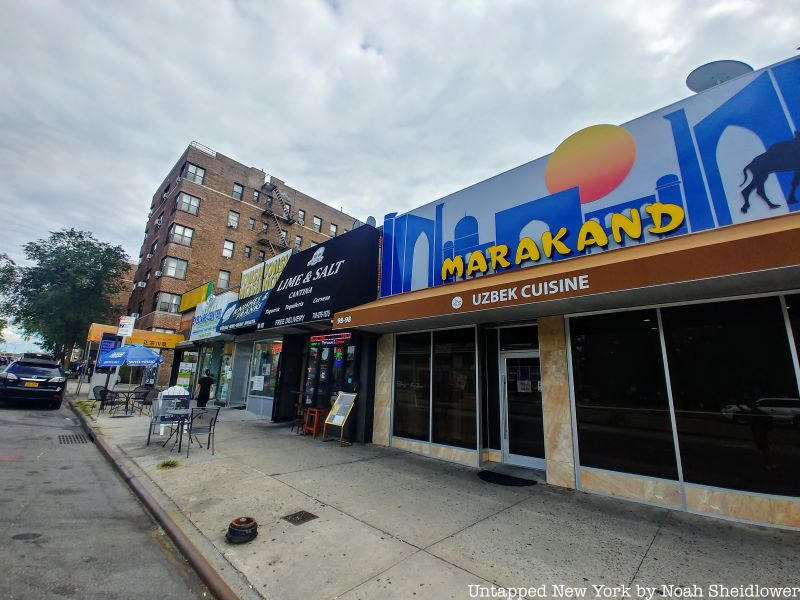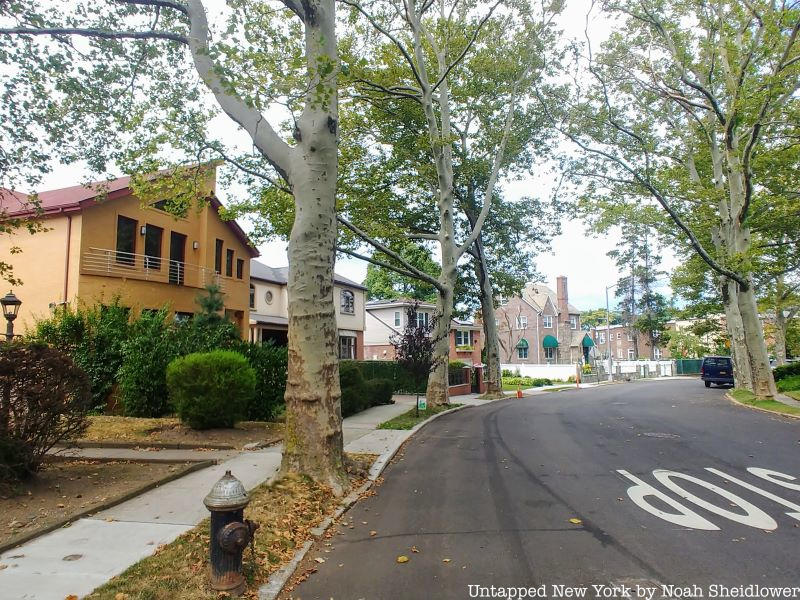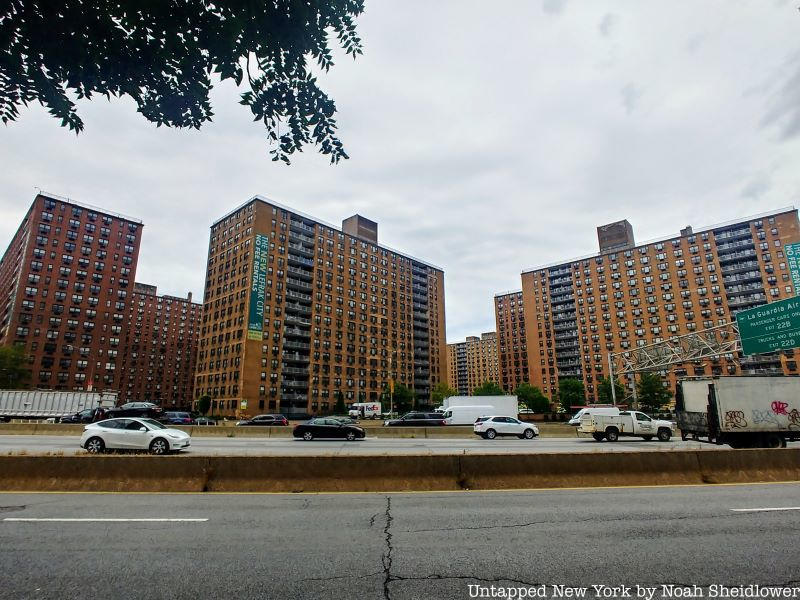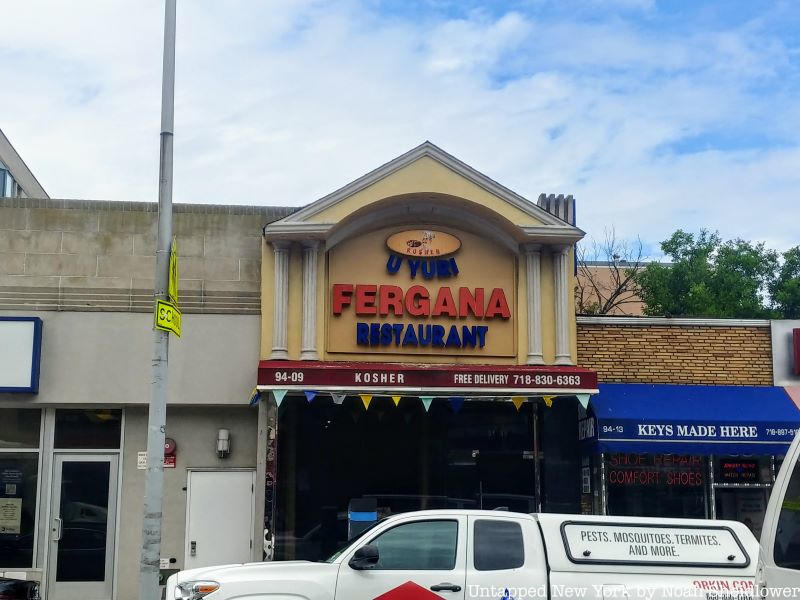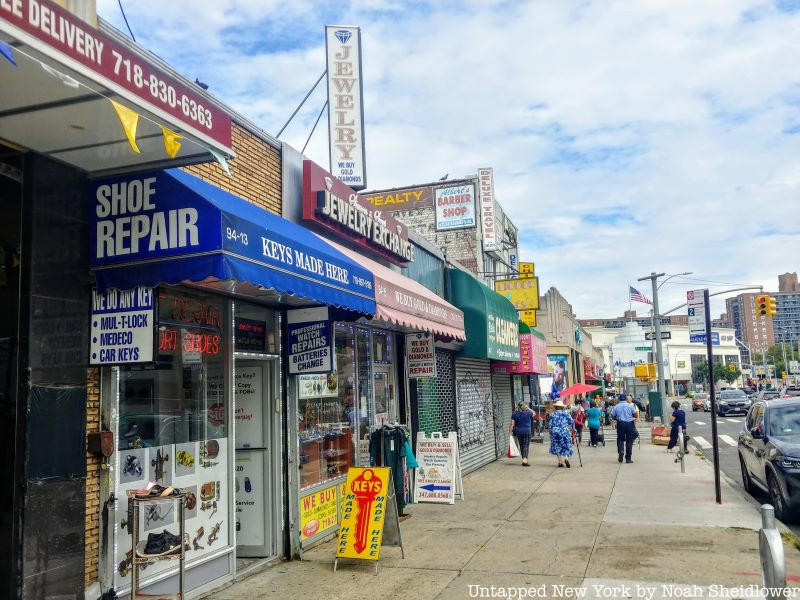
Rego Park, Queens, is bordered by Elmhurst, Corona, and Forest Hills. The neighborhood is mainly residential, with dozens of businesses around Queens Boulevard and 63rd Drive. Apartment complexes such as LeFrak City have contributed to the development of business in the neighborhood, which has maintained many of its historic sites from the 1920s and 1930s. Rego Park is known for its large Jewish community, particularly Bukharan Jews from present-day Uzbekistan, as reflected in the wide selection of Central Asian restaurants and shops. Here are our top 10 secrets of Rego Park!
1. Rego Park is named after the Real Good Construction Company
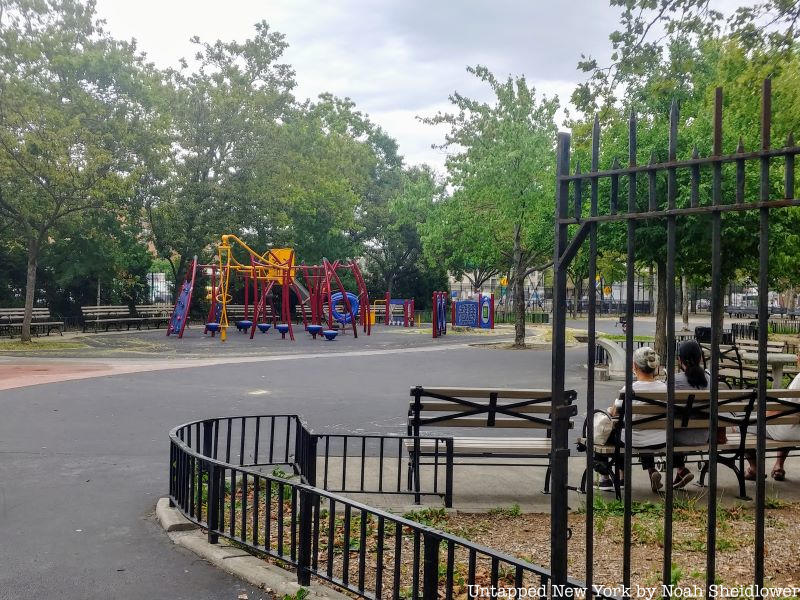
The Real Good Construction Company first bought farms in the area south of Queens Boulevard in the 1920s, constructing homes and apartments on the land. Each eight-room home cost just $8,000, and the construction company built 525 of them in total. These detached wooden homes were built throughout the country as well. Each had a 12-by-8-foot front lawn with elaborate entryways, some resembling castles. Real Good created six crescent-shaped streets (they could not be circles due to the Rockaway Branch interfering) called Asquith, Boelsen, Cromwell, Dieterle, Elwell, and Fitchett, which were coined to sound aristocratic and attract wealthier people.
The name Rego Park is a shortened version of Real Good to honor the growth the homes spurred. By 1926, stores began to pop up around Queens Boulevard and 63rd Drive, the two main roads in the neighborhood today. More apartment buildings were constructed in the late 1920s, and the Independent Subway System opened eight stations in the area. Some of these original homes still stand today, though many have been torn down in place of newer homes.
2. Art Spiegelman’s Maus takes place in Rego Park
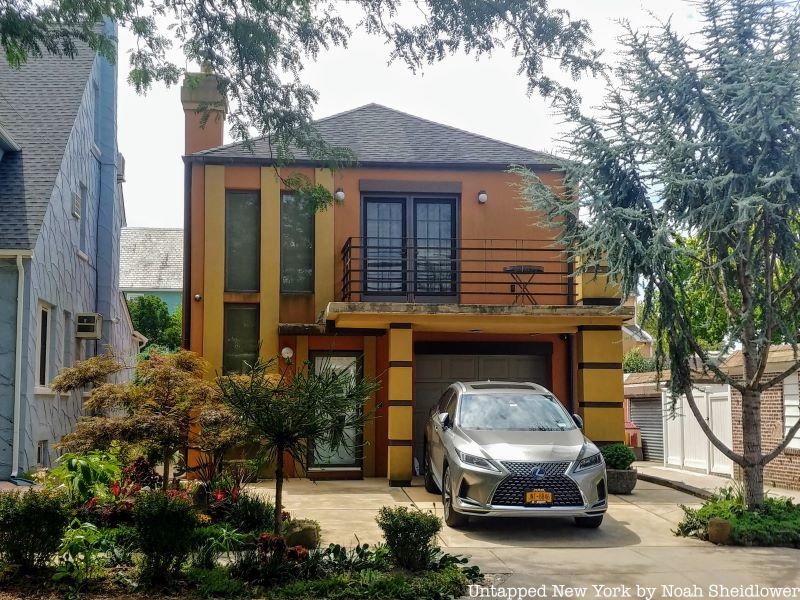
Art Spiegelman, who edited for comics magazines Arcade and Raw, is best known for his graphic novel Maus, which depicts interviews with his father who was a Polish Jew who survived the Holocaust. The frame tale of the novel features interviews with Vladek, his father, who lived in Rego Park, where Art was raised. His mother, who also lived in Rego Park, committed suicide while he was still young. Spiegelman tells of his time skating with friends in Rego Park before falling and hurting himself, after which he goes back home and tells how his friends left him behind. This scene then propels the novel into his adulthood, during which he visits his father periodically from 1978 to 1979.
Some illustrations in the book depict sites that Rego Park residents may recognize. One illustration shows Spiegelman exiting the 63rd Drive subway station, which closely resembles the station today. Another illustration reveals the address 63-12 on a building, corresponding to 63-12 Carlton Street family home in Rego Park. The home today bears no clear signs or markings denoting this was the Spiegelman family home, but the home was an important site for preserving Holocaust history.
3. There was a fire in Rego Park in 1972 that destroyed much of Rego Park’s property
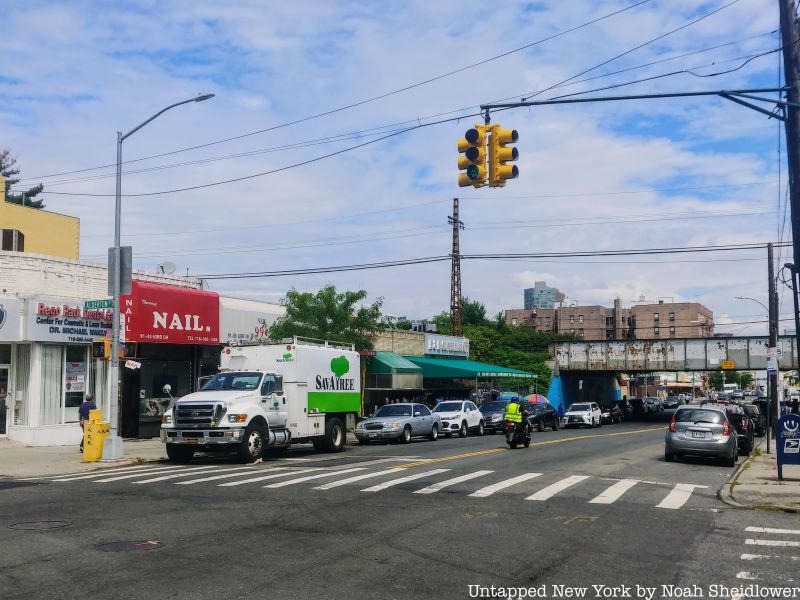
In 1972, a fire broke out on 63rd Drive between Austin Street and the Long Island Rail Road overpass, destroying over a block of buildings and the library. The fire broke out at a shoe store and quickly grew to a television repair center, a pet store, a toy shop, and an Indian restaurant. The library and its many wooden shelves also went up in flames and hit the railroad embankment above. A fire had decimated the same block in 1959 as well but did not get as much press.
The 1972 fire was contained so that it did not reach a nearby apartment building and a new Key Food supermarket. The fire was also put out before it damaged electrical wires on the railroad. However, dozens of people were out of work, and it took years to repair the blocks affected. A new library was built across the street, though in the meantime, the community had a “Bookmobile” provide services underneath the LIRR tracks.
4. The abandoned LIRR Rockaway Beach Branch starts in Rego Park
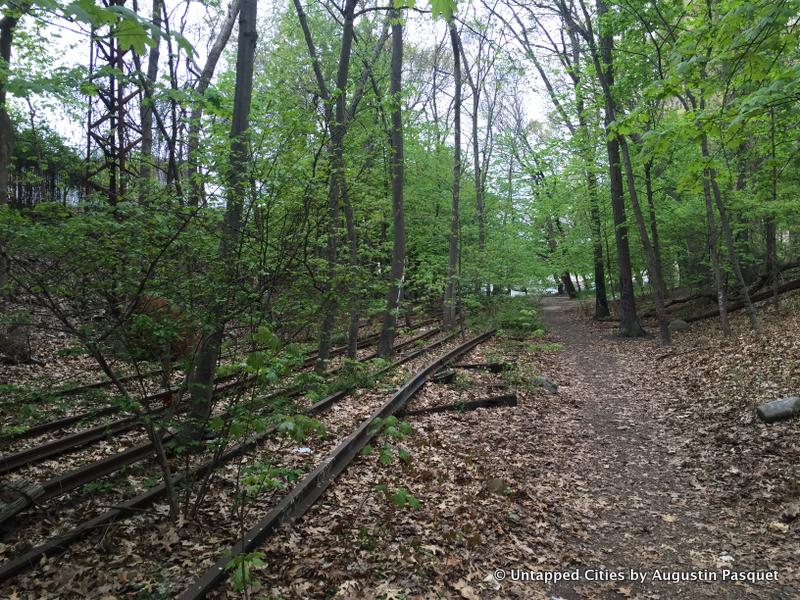
The LIRR Rockaway Beach Branch, a 3.5-mile stretch of abandoned rail, started in Rego Park and extends to Rockaway Beach. Construction for the Rockaway Beach Branch began in 1877, though it was not fully completed until the 1920s. Track fires that erupted in the mid-1900s by Jamaica Bay led to the rail line’s abandonment in 1962. The southern section of the branch was converted into subway lines in 1955, followed a year later by reduced LIRR operations between Rego Park and Ozone Park, Queens.
The QueensWay project is a plan to convert the former LIRR Rockaway Beach Branch into a public park. There have been proposals to reactivate the branch, though all have struggled to do so due to issues such as environmental impacts and high costs. The Friends of the QueensWay project was created in 2011 to establish a park around the abandoned tracks, receiving support from figures including U.S. Representative Grace Meng and Senator Toby Ann Stavisky. The QueensLink is another proposal for a north-south transit link in Queens that would make new park space adjacent to the revitalized transit route.
5. Lost Battalion Hall on Queens Blvd. houses artifacts from the World War II era
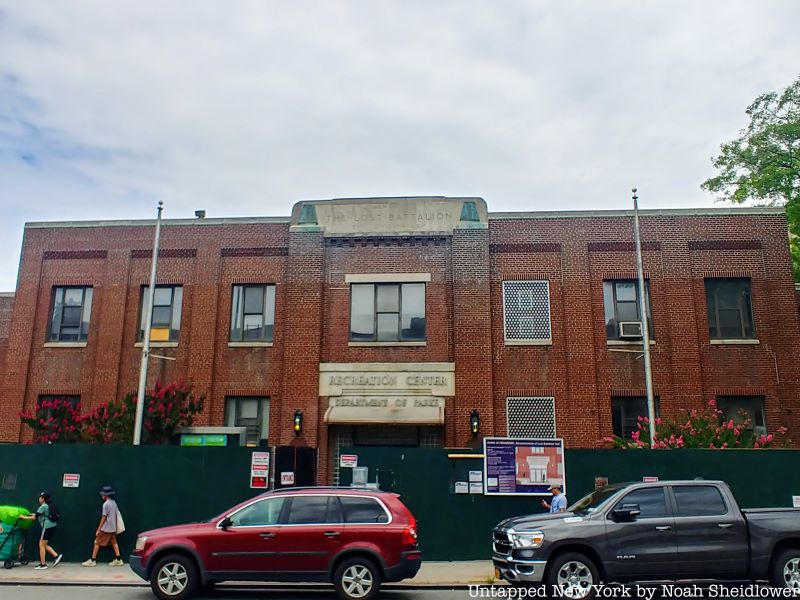
The Lost Battalion Hall on Queens Boulevard has been a community center in Rego Park for over 80 years, offering everything from culinary arts programs to community events. Located at 93-29 Queens Boulevard, the hall was built from 1938 to 1939 as part of the Works Progress Administration. The building pays homage to the 77th Division of the U.S. Army, which fought in the Meuse-Argonne Offensive during World War I and lost over half of its 550 American soldiers. The building was constructed in the Art Moderne style and was placed under Parks Department jurisdiction in 1960.
According to Rego Forest Preservation, the façade contains two bronze tablets of the Statue of Liberty, while the gymnasium houses two WPA murals called “Sailor, Soldier, Marine” depicting the Lost Battalion. The hall featured a firing range for the Queens Veterans of Foreign Wars and the American Legion, as well as held welcome ceremonies for new enrollees to fight in World War II. Other events in the 1940s and 1950s included square dance festivals, boxing matches, presidential testimonials, and an appearance by professional basketball player Bobby McDermott. In 1996, a professional wrestling event called the Massacre on Queens Boulevard took place here, seeing faceoffs between Taz and Chris Jericho.
6. Rego Center was built on the former Alexander’s department store
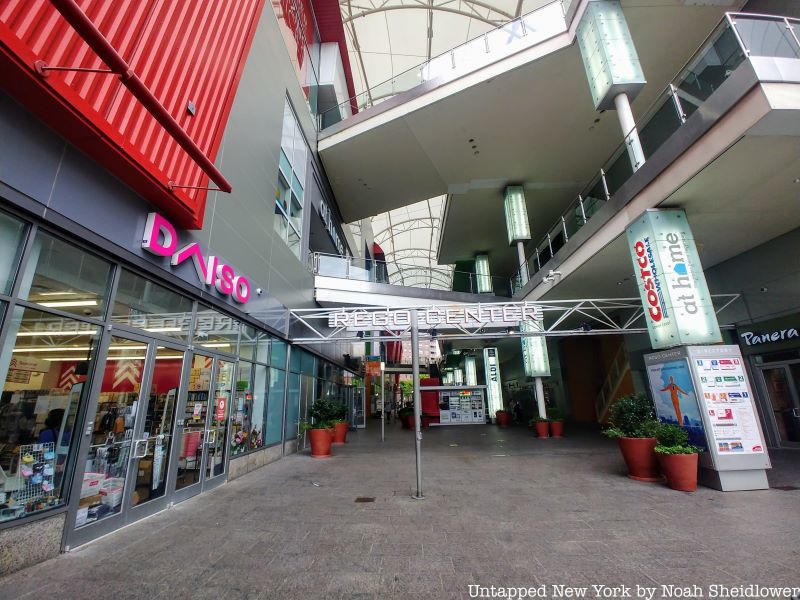
Rego Center is a Rego Park shopping mall by the Long Island Expressway and Queens Boulevard. The mall contains properties like Costco, IKEA, and other large retail stores. Many of the stores opened in the early 2010s across the four levels of shops at the mall, and the center was designed by Ehrenkrantz Eckstut & Kuhn Architects.
Rego Center opened on the site of the only Queens location of Alexander’s, a department store that began in the Bronx in 1928. The store catered to the upper-middle class and offered a selection of designer clothing. The franchise expanded during the Great Depression with more discounts and bargains, and the Rego Park store opened in 1959. It later opened its flagship store on 59th Street in Manhattan in 1963. Discount department store Caldor bought the location in 1995, though just a year later, Sears took over the space.
7. Rego Park had two major historical theaters: The Drake and Trylon
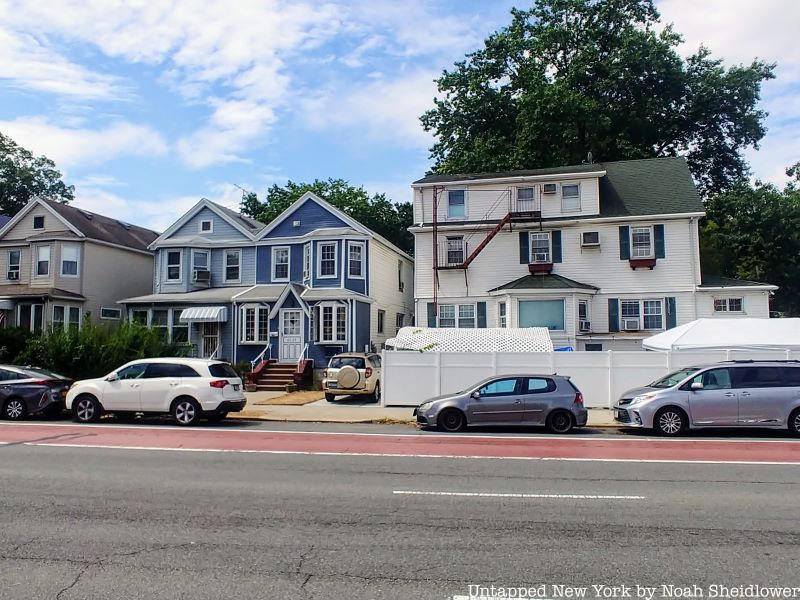
Rego Park had a rich theater history defined by the Drake and Trylon Theaters, both of which had quite a few interesting stories. The Drake Theater opened in 1935 with 585 seats and a single screen. Movie bills were changed twice per week at the theater, and it was owned by Murray Schoen, who also owned Woodside‘s Deluxe Theater. The Drake was perhaps most famous for a 1978 riot in which 500 teenagers rioted during a Led Zeppelin concert movie, in which the sound volume did not properly work; this resulted in heavy interior damage. Another important event in the Drake’s history was the exclusive screening of the movie Caligula for a year straight in the early 1980s. The Drake ultimately closed in 1992, after which it was turned into a catering hall.
The Trylon Theater was opened in 1939 and was named for the monumental structure at the 1939 New York World’s Fair. The theater had orchestra and balcony levels and would show popular films every week before being taken over by Interboro Circuit Inc. It was known as the “Theater of Tomorrow” and had marquee showings of The Wizard of Oz and Gone With the Wind. Nearby shops included the aptly named Trylon Soda & Ice Cream, Trylon Realty, Trylon Tailors, and Trylon Liquors. The Art Deco movie house closed just before 2000, after which it was purchased by the Bukharan community for a cultural center. Many of the historical features were destroyed, including the mosaic ticket booth.
8. Rego Park’s large Bukharan Jewish community runs Bukharan and Uzbek restaurants
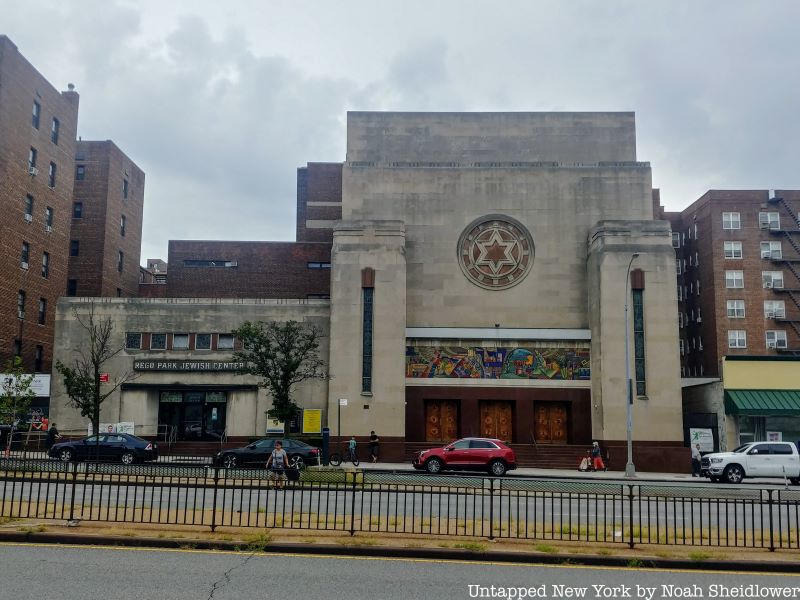
Rego Park and neighboring Forest Hills have perhaps the largest Bukharan Jewish community in the United States. Bukharan Jews are a Jewish subgroup from the Central Asian Emirate of Bukhara, which is now mostly in Uzbekistan. Historically, the group spoke Bukharan, a dialect of the Tajik language. After the fall of the Soviet Union, many Bukharan Jews immigrated to Israel and the United States, as well as much of Europe. Nearby Kew Gardens also has a large Bukharan Jewish community, though the number of Bukharan-owned businesses in Rego Park has grown over the past few years.
Along 63rd Drive and Queens Boulevard are a handful of Bukharan and Uzbek restaurants such as Marakand, Cheburechnaya, Chaikhana Sem Sorok, and U Yuri Fergana. On the outskirts of Rego Park is 108th Street, referred to as the “Bukharan Broadway,” with Uzbek places like Tashkent Supermarket, Nadezhda, and Salute. Rego Park and Forest Hills also have a handful of Bukharian Jewish centers, as well as clothing stores and other gift shops. Some Bukharan Jews also attend Rego Park Jewish Center, the only listing on the National Register of Historic Places in Rego Park.
9. Rego Park was the setting of The King of Queens and scenes from The Wolf of Wall Street
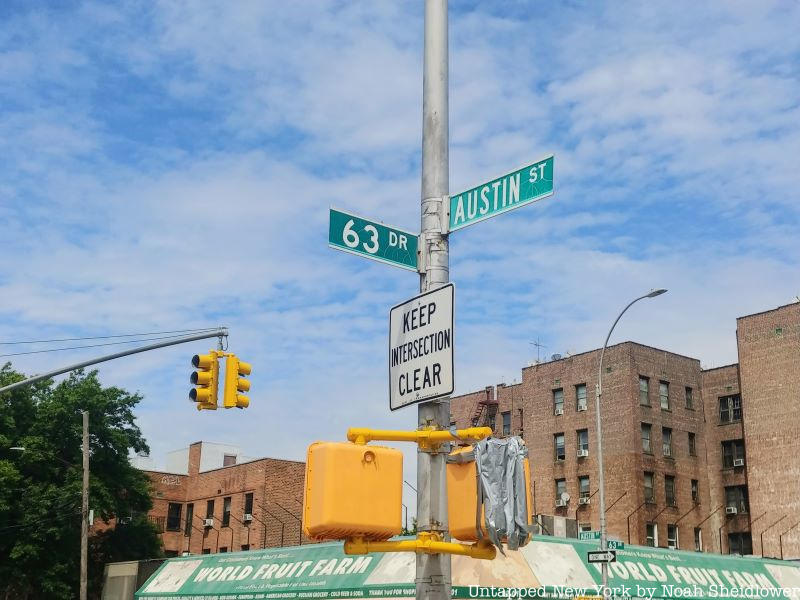
Rego Park was the setting of many popular television shows and films over the last few decades, including The King of Queens which takes place in Rego Park. The CBS sitcom, which ran from 1998 to 2007, focuses on Doug and Carrie Heffernan, a working-class couple who live in Rego Park. The couple lives at the fake address 3121 Aberdeen Street, which was actually filmed in Cliffside Park, New Jersey. Though, there are occasionally clips of Rego Park in the sitcom.
The film The Wolf of Wall Street was also filmed in part in Rego Park, specifically at the now-closed Shalimar Diner. Located at 63-68 Austin Street, the diner has since been demolished but was in business for 45 years. Shots from both the interior and exterior of the diner appear in the film. The 1980s sitcom Dear John centered around the fictional Rego Park Community Center, and parts of the 2009 crime film Brooklyn’s Finest were filmed in Rego Park as well.
10. Rego Park is bounded by the uncharacteristically named Yellowstone Boulevard
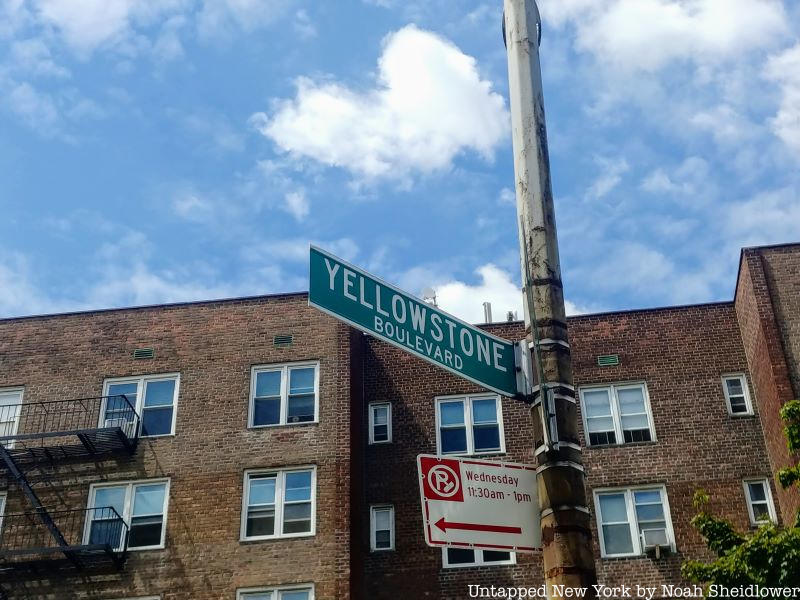
Rego Park is bounded by three major boulevards: Queens, Woodhaven, and the strangely named Yellowstone Boulevard. Yellowstone Boulevard is one of the area’s original colonial roads, first named Whitepot Road after the original Dutch and English settlement. Yellowstone Boulevard was indeed named by an early 1900s realtor, though the origin of the name is unknown.
Today, much of Yellowstone Boulevard is lined with tall apartments The boulevard also names a nearby park that opened in 1968 in neighboring Forest Hills.
Next, check out the Top 10 Secrets of Forest Hills and Kew Gardens!






